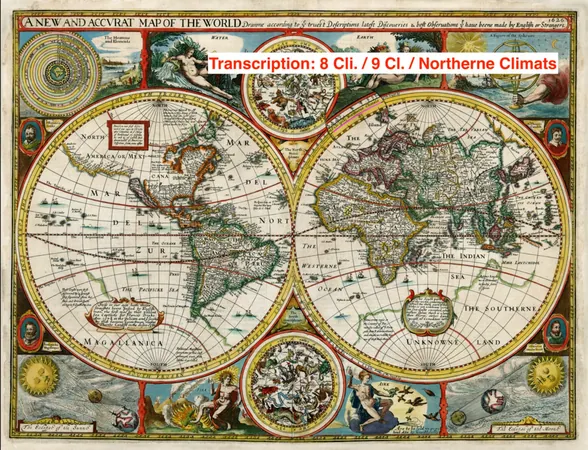
Unveiling the Stars: How Machine Learning is Revolutionizing Our Understanding of 16th-Century Astronomy
2024-10-31
Author: Arjun
A groundbreaking study out of Berlin has harnessed the power of machine learning to delve deep into the evolution of European astronomical thought during the pivotal 15th and 16th centuries. This innovative research, published in the esteemed journal Science Advances, marks a significant milestone in the intersection of technology and historical scholarship, revealing that our understanding of the cosmos was shaped by many unsung heroes alongside iconic figures like Galileo, Kepler, and Copernicus.
The researchers, a collaborative team of computer scientists, historians, and astronomers, embarked on this journey with a clear objective: to decode a treasure trove of handwritten texts, charts, and data from the era’s scientific textbooks. Over the years, it has become apparent that scientific advancements are rarely the product of a single individual’s inspiration; rather, they emerge from a collective milieu of ideas and contributions. This study reveals just how interconnected the scientific community was during this rich period of discovery.
In their quest, the team compiled over 300 crucial texts that collectively illustrate the evolution of astronomical theories. Recognizing the impracticality of manually analyzing such vast quantities of historical data, the researchers turned to machine learning—a tool that can process and interpret information at speeds far beyond human capabilities.
By training a machine-learning application on an impressive 76,000 pages of textbooks filled with numerical tables, illustrations, annotations, and written content, the researchers sought to identify key trends in the development of astronomy. They meticulously taught the algorithm to differentiate between types of information, such as distinguishing numbers from textual descriptions. The results were revelatory.
One significant finding was the profound influence of advancements in mathematics on the field of astronomy. The researchers described this transformative phase as the "mathematization of astronomy," encompassing the standardization of formulas for celestial calculations, the redefinition of climate zones, and the dissemination of newfound knowledge across Europe. This development was not just a technical evolution; it represented a cultural shift in how astronomers understood the universe and shared their discoveries.
This study underscores the collaborative nature of scientific progress and highlights the importance of recognizing lesser-known scholars who contributed to astronomical advancements. As we stand on the shoulders of these intellectual giants, it's evident that the evolution of our understanding of the cosmos is a tapestry woven from many threads, with each scientist playing a vital role.
The team’s groundbreaking work not only illuminates our past but also sets the stage for future interdisciplinary explorations, where technology and historical inquiry can come together to unlock even more secrets of our scientific heritage.
Stay tuned, as the implications of these findings could transform the way we teach and understand the history of science itself!



 Brasil (PT)
Brasil (PT)
 Canada (EN)
Canada (EN)
 Chile (ES)
Chile (ES)
 España (ES)
España (ES)
 France (FR)
France (FR)
 Hong Kong (EN)
Hong Kong (EN)
 Italia (IT)
Italia (IT)
 日本 (JA)
日本 (JA)
 Magyarország (HU)
Magyarország (HU)
 Norge (NO)
Norge (NO)
 Polska (PL)
Polska (PL)
 Schweiz (DE)
Schweiz (DE)
 Singapore (EN)
Singapore (EN)
 Sverige (SV)
Sverige (SV)
 Suomi (FI)
Suomi (FI)
 Türkiye (TR)
Türkiye (TR)